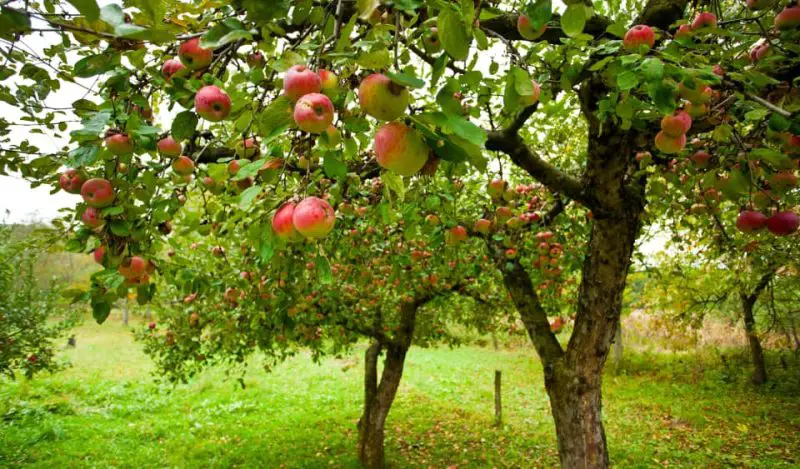Growing fruit trees in Oklahoma is a rewarding way to enjoy fresh, homegrown produce while enhancing your backyard orchard. Oklahoma’s unique climate, which combines hot summers, cold winters, and occasional droughts, demands selecting fruit trees that are well-suited to thrive in these conditions. Understanding which fruit trees grow best in Oklahoma will help you create a sustainable, productive orchard that flourishes year after year.
The best fruit trees that grow in Oklahoma not only provide delicious fruits but are also resilient against local pests, diseases, and weather extremes. From apples to peaches and plums, many varieties have adapted to the state’s USDA hardiness zones 6 and 7. Knowing how to care for these trees, including their soil preferences and pruning needs, is key to a successful backyard orchard.
This guide covers the most popular and reliable fruit trees that grow in Oklahoma, highlighting their characteristics, growth habits, and how to cultivate them in your backyard. Whether you are a beginner or an experienced gardener, you’ll find valuable insights to help you choose and nurture the perfect fruit trees for your Oklahoma orchard.
Oklahoma’s Climate and Its Impact on Fruit Tree Growth

Oklahoma’s climate features a continental pattern with hot, often dry summers and cold winters. The state spans USDA hardiness zones 6a through 7b, meaning temperatures can vary from lows around -10°F to highs well above 90°F. These temperature swings influence fruit tree selection and management.
Rainfall varies but averages between 30 and 40 inches annually, which is moderate but often seasonal. Drought conditions can occur, especially in late summer. Soil types in Oklahoma range from sandy loam to heavy clay, which affects water drainage and nutrient availability. Gardeners must consider soil amendments and irrigation practices to optimize fruit tree health.
Many fruit trees native or adapted to temperate climates do well here but must be chosen for their cold hardiness, disease resistance, and ability to withstand heat stress. Selecting fruit trees that align with Oklahoma’s climate ensures they enter dormancy properly during winter and set fruit reliably in the growing season.
Selecting the Best Fruit Trees for Oklahoma Gardens
Choosing fruit trees that thrive in Oklahoma starts with understanding which species and varieties perform best in the region’s conditions. It’s essential to pick trees that can tolerate both the summer heat and winter cold, while resisting common pests and diseases found locally.
Apples are among the most widely grown fruit trees in Oklahoma because many varieties are well-adapted to its climate. Peaches also flourish here but require careful site selection and maintenance to avoid fungal diseases. Pears, plums, cherries, and figs can also grow well if the right cultivars are selected.
When planting fruit trees, consider the tree’s mature size, chill hour requirements, and pollination needs. Some fruit trees are self-pollinating, while others require cross-pollination to produce fruit. Understanding these factors will help maximize yields and ensure your orchard’s success.
Apple Trees: A Staple for Oklahoma Orchards
Apple trees are highly popular among Oklahoma growers due to their versatility and variety. Many cold-hardy apple cultivars are suited to Oklahoma’s climate, tolerating both winter freezes and summer heat.
Varieties like ‘Red Delicious,’ ‘Jonathan,’ and ‘Arkansas Black’ are favored for their flavor, productivity, and disease resistance. Apple trees generally need between 500 and 1,000 chill hours, which matches well with most Oklahoma zones.
Apples require full sun and well-drained soil to thrive. Regular pruning is necessary to maintain tree shape, promote air circulation, and improve fruit quality. Pest management focuses on controlling codling moth, apple maggot, and fungal diseases such as apple scab.
Harvesting apples usually occurs from late summer through fall, depending on the variety. Proper storage can extend their shelf life, allowing you to enjoy fresh apples months after picking.
Peaches: Thriving in Oklahoma’s Warm Summers
Peach trees are another excellent choice for backyard orchards in Oklahoma. They are well-suited to the region’s warm summers but need extra attention during wet springs to prevent diseases like peach leaf curl and brown rot.
Popular peach varieties include ‘Redhaven,’ ‘Elberta,’ and ‘Harvester,’ all of which are known for their delicious fruit and adaptability. Peaches generally require fewer chill hours than apples, around 400 to 700 hours, making them suitable for Oklahoma’s moderate winters.
Good drainage is critical for peach trees, as they are sensitive to root rot. Planting on slopes or raised beds helps prevent waterlogging. Regular pruning helps manage tree vigor and improves sunlight penetration, which enhances fruit ripening.
Pest control involves monitoring for peach tree borers, aphids, and mites. Timely applications of organic or chemical treatments protect trees and fruit quality.
Pears: Durable and Productive for Oklahoma Gardens
Pear trees grow well in Oklahoma and are prized for their hardiness and reliable fruit production. Varieties such as ‘Bartlett,’ ‘Kieffer,’ and ‘Moonglow’ are well-adapted to local climate conditions and resist many common diseases.
Pears tolerate a range of soil types but prefer well-drained, slightly acidic soil. They require full sun and moderate watering, especially during dry spells. Some pear varieties are self-pollinating, while others may benefit from cross-pollination with compatible cultivars.
Pear trees benefit from annual pruning to maintain shape and improve airflow, reducing disease pressure. Common pests include pear psylla and codling moth, which can be managed with integrated pest management techniques.
Harvesting pears at the right stage is essential since some varieties ripen best off the tree after picking. Understanding the specific needs of each cultivar helps maximize fruit quality.
Plums and Cherries: Adding Diversity to Your Orchard
Plum trees offer attractive flowers and delicious fruit, making them a popular choice in Oklahoma. European and Japanese plum varieties are grown here, with ‘Methley’ and ‘Santa Rosa’ among favorites.
Plums require well-drained soil and full sun to produce high-quality fruit. They generally need fewer chill hours than apples and pears, making them suitable for warmer parts of Oklahoma.
Cherries are less common but can be grown successfully in cooler areas of the state. Sweet cherry varieties usually need more chill hours, while sour cherries are more adaptable. Both benefit from proper pruning and disease management.
Plums and cherries attract pollinators and provide seasonal interest to your orchard, enhancing biodiversity and visual appeal.
Figs and Other Fruit Trees for Oklahoma
Fig trees are increasingly popular in Oklahoma due to their adaptability to warm summers and relative drought tolerance. Varieties such as ‘Brown Turkey’ thrive in Oklahoma’s climate and produce sweet, nutritious fruit.
Figs prefer well-drained soil and full sun. They may need winter protection in the coldest parts of Oklahoma but generally perform well with minimal care. Figs can be grown in the ground or containers, making them versatile for small spaces.
Other fruit trees such as mulberries and persimmons can also be grown successfully in Oklahoma, offering additional options for diversifying your backyard orchard.
Soil Preparation and Planting Tips for Fruit Trees in Oklahoma
Preparing your soil properly before planting fruit trees sets the foundation for healthy growth. Oklahoma soils vary widely, so testing soil pH and texture is essential. Most fruit trees prefer slightly acidic to neutral pH between 6.0 and 7.0.
Incorporating organic matter such as compost improves soil fertility and drainage. For heavy clay soils common in parts of Oklahoma, raised beds or mounding the planting area help prevent waterlogging.
Plant trees in early spring or late fall when temperatures are mild. Space trees according to their mature size to ensure adequate airflow and sunlight penetration. Water newly planted trees regularly during the first growing season to establish roots.
Mulching around the base conserves moisture, suppresses weeds, and moderates soil temperature. Avoid piling mulch against the trunk to prevent rot.
Caring for Your Oklahoma Backyard Orchard
Proper care throughout the year ensures your fruit trees stay healthy and productive. Water trees deeply during dry periods, especially in summer. However, avoid overwatering as it can cause root diseases.
Fertilize according to the needs of each tree species, typically in early spring before new growth begins. Use balanced fertilizers or organic amendments to supply essential nutrients.
Pruning is crucial to maintain tree shape, remove dead or diseased branches, and promote air circulation. Prune dormant trees in late winter or early spring before buds break.
Monitor for pests and diseases regularly. Employ integrated pest management strategies including cultural controls, biological agents, and targeted treatments to minimize chemical use.
Harvesting and Storing Your Fruit
Knowing when and how to harvest is key to enjoying the fruits of your labor. Each fruit tree species has specific indicators of ripeness, such as color change, firmness, and taste.
Harvest fruits gently to avoid bruising. Some fruits like apples and pears benefit from curing or ripening off the tree, while others such as peaches and plums are best eaten fresh shortly after picking.
Store harvested fruit in cool, ventilated areas or refrigeration to extend shelf life. Proper handling and storage reduce waste and allow you to enjoy fresh fruit well beyond the harvest season.
FAQ about Fruit Trees That Grow in Oklahoma
What are the best fruit trees that grow in Oklahoma?
Apples, peaches, pears, plums, cherries, and figs are among the best fruit trees suited for Oklahoma’s climate.
Can fruit trees survive Oklahoma’s winters?
Yes, many fruit trees grown in Oklahoma are hardy to USDA zones 6–7 and can tolerate the cold winter temperatures with proper care.
How much chill hours do fruit trees need in Oklahoma?
Most fruit trees in Oklahoma require between 400 and 1,000 chill hours, depending on the species and variety.
Do fruit trees need special soil in Oklahoma?
Fruit trees prefer well-drained, fertile soil with a pH between 6.0 and 7.0. Amending Oklahoma’s clay soils with organic matter improves growth.
When is the best time to plant fruit trees in Oklahoma?
Early spring or late fall is ideal for planting fruit trees in Oklahoma to help them establish roots before extreme temperatures.
Conclusion
Creating a backyard orchard with the best fruit trees that grow in Oklahoma is a fulfilling way to connect with nature and enjoy fresh produce. By choosing species suited to Oklahoma’s climate, preparing your soil well, and providing ongoing care, you can cultivate healthy, productive trees.
Whether you favor apples, peaches, pears, or figs, each fruit tree adds unique beauty and flavor to your garden. With patience and attention, your Oklahoma orchard will thrive for years, providing delicious harvests and outdoor enjoyment.






